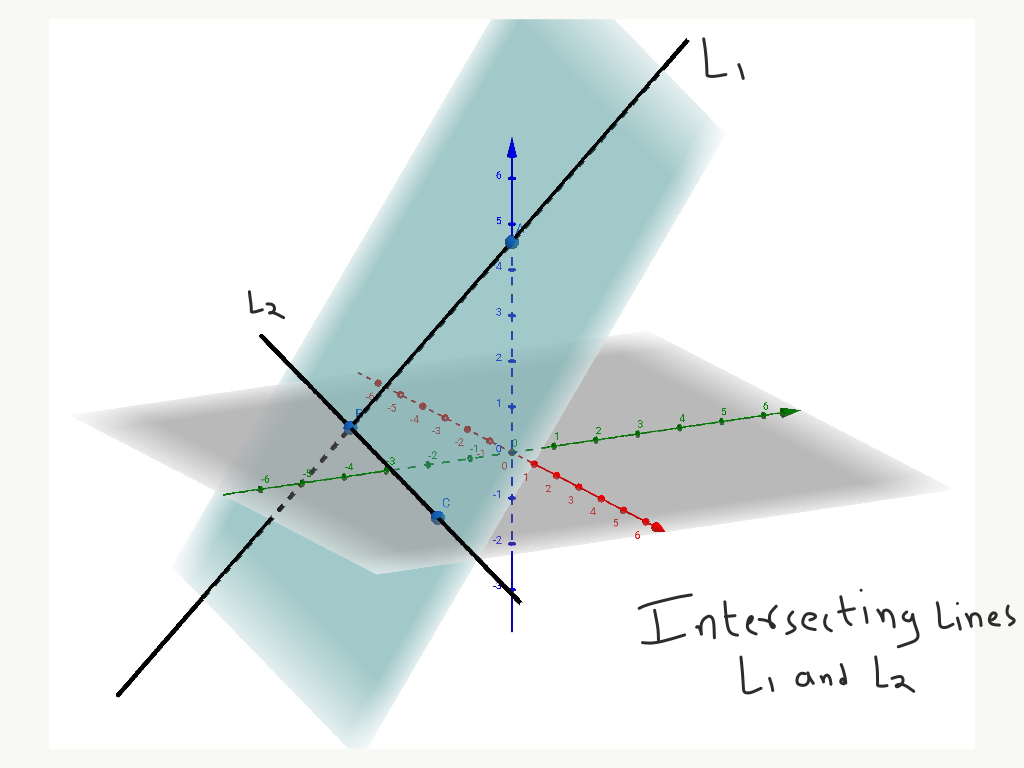Visualising the Shortest Distance between Skew Lines
In two dimensions, a pair of lines can be any one of either intersecting or parallel. But in three dimensional space there is a third alternative. A pair of lines in 3D can be skew lines.
A pair of lines that do not intersect and are not parallel either are characterised as skew lines. And that’s the only way to describe them. Skew lines are straight lines in 3D that are neither pointing in the same two directions nor cutting through each other.
We can always find a plane in 3D that contains two intersecting lines. Same is true for a pair of parallel lines as well. But skew lines can never be both in the same plane.
But for a given pair of skew lines we can always find a unique pair of parallel planes each containing one of the two lines. This is an important property which helps us derive the formula for finding the shortest distance between two skew lines - a topic studied in 3D geometry.
But first, what is the shortest distance between two lines?
We can begin with the case of parallel lines. What’s the shortest distance between two parallel lines?
Intuitively, you will say that the shortest distance is the length of a line segment that is perpendicular to both the lines. It is true, but why can’t the shortest distance be any other segment which is at an angle to parallel lines?
This can be properly reasoned using the fact that the hypotenuse is the biggest side in a right angled triangle.
The inclined segment from A to B in the figure above cannot be the shortest path between parallel lines. If we drop a perpendicular from A(or B) to the parallel line, meeting the parallel line at point C, we will get a right angled triangle. So this perpendicular AC has to be smaller in length than the hypotenuse AB as per the above mentioned fact.
What about the shortest distance between skew lines?
As it turns out, the shortest distance between skew lines is also the length of the line segment which is perpendicular to both the lines. This may not be intuitive at first as it may have been for the case of parallel lines. To develop an intuition for this think about parallel planes each containing one of the two skew lines.
Using the same line of reasoning, we can assert that the shortest path between parallel planes is a line segment perpendicular to both the planes.
If a line is perpendicular to a plane then it means the line is also perpendicular to every line on that plane.
The question is, is the shortest distance between skew lines also the shortest distance between the two parallel planes containing them?
Well, the obvious is that the distance(shortest or otherwise) between skew lines cannot be less than the shortest distance between parallel planes containing them. If a line segment drawn from one line is shorter than the shortest distance between the planes, it won’t even make it to any point on the other line!
If the shortest distance between skew lines is equal to the shortest distance between parallel planes then there must be a line segment connecting two points on the skew lines such that the line segment is perpendicular to both the planes.
(Measurements are off by a small degree. You can’t see it though from this view.)
Does such a line segment exist? Yes, it does, and it is unique for a given pair of skew lines. The location of these two particular points on two lines can be better understood from a different viewing perspective than shown in the image above. Imagine you are looking at it from a point of view where the surface of one of the parallel planes is perfectly parallel to your device’s screen.
It will appear as if the two lines are intersecting(which is obviously not true). Their specious point of intersection is actually just the point on the line which is in “front” of you, and which is also hiding the point on the other line straight “behind” it on the parallel plane. Clearly the segment joining these two points on the lines will be perpendicular to both the planes.
So to conclude, the shortest distance between two skew lines is the length of the line segment which is perpendicular to both the lines.









Comments
Post a Comment